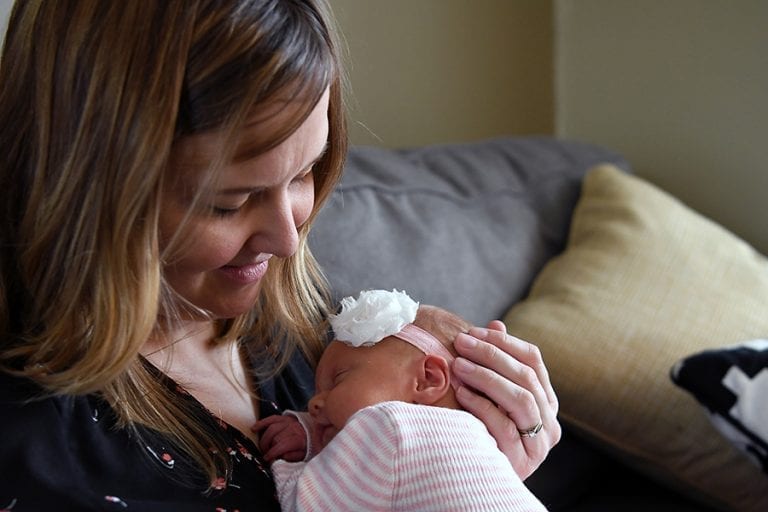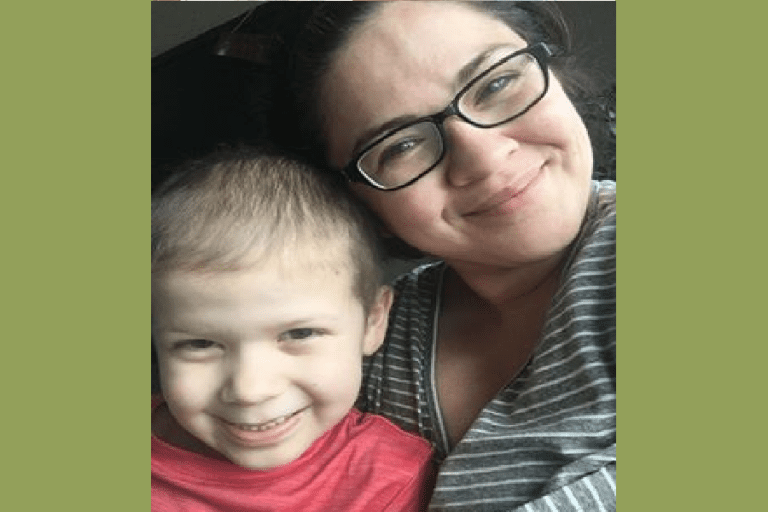Peighton’s mother, Jennifer, holds an x-ray up to her kitchen window. “See,” she says, “it’s right there!” She points to a white patch between two eyeballs—an image of her daughter’s brain and her tumor.
It’s the last remaining tumor of six that were in her spine and brain, sitting just under her optic nerve. “We call it Gary the Snail!” says 10-year-old Peighton with a huge grin. Peighton doesn’t let her diagnosis of grade II pilomyxoid astrocytoma (PMA) stop her from cartwheeling across her living room.
Six years ago, however, Peighton wasn’t acting like her usual self-described “sassy” self. After having headaches, throwing up constantly and weighing a mere twenty-six pounds, Jennifer knew something was wrong with her then 4-year-old daughter. She took her to the emergency room near their hometown where doctors took a CT scan of her stomach.
Though they found a cyst on her liver, Jennifer said she still felt like there was something more going on and that the doctors weren’t looking in the right place.
She asked the doctors to scan Peighton’s head. When they did, they found a golf-ball sized mass in the middle of her brain. A few days later, doctors discovered three other masses in her brain and two more in her spine.
“We were originally told to never expect any of the tumors to go away,” says Jennifer. “But Peighton has a strong desire to live.”
The small preschooler was diagnosed with a brain tumor that occurs most often in children between 5 and 14 years old. Typically, surgery is the first step to combating PMA; unfortunately, the location of the tumors sometimes prevents complete removal—as is the case with “Gary the Snail.”
After diagnosis, Peighton was treated at Children’s Hospital in Minneapolis where she endured eighteen surgeries on her head and spine and several chemotherapy treatments over the course of six years.
Though the treatments shut down all but one of her tumors, some of her medications had adverse side effects, so she had to stop the treatments.
Her tumor remained stable for sixteen months, but in December 2014, Peighton received unfavorable news during her follow-up scans. “I just had a motherly instinct,” says Jennifer. “We weren’t going to get the news that we wanted.”
Unfortunately, Peighton’s remaining tumor had become increasingly active.
Today, they are exploring experimental treatments for low grade tumors through specialized brain tumor doctors. One early phase treatment option, an oral inhibitor, is currently under consideration.
With this therapy, Peighton will not need a port or any type of injection, and it would target the tumor’s microenvironment. Until then, however, Peighton and Jennifer have to wait for the doctors to look over her cancer history, treatment and scans to see if the treatments would be a good fit for PMA.
“You just go into survival mode and take one moment at a time,” Jennifer says. “You say okay, this is what’s next, this is what’s got to be done, and you move forward.” Despite her last tumor sticking around, Peighton maintains a positive attitude. “The fire she has to survive pushes all those fears in my head away,” says Jennifer.
As she cartwheels away into her living room, Peighton says, “I can change the story from really sad to okay. I’m a ninja.”



